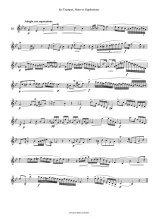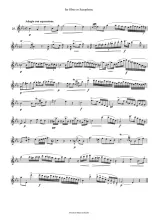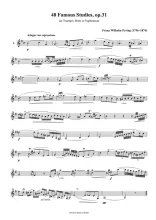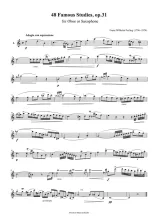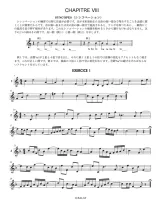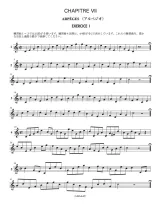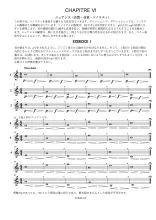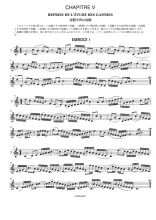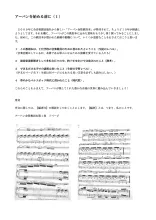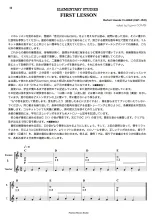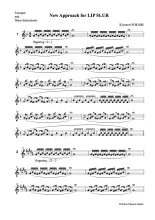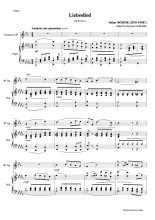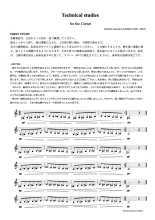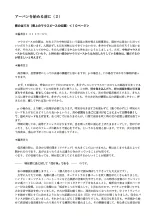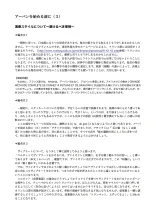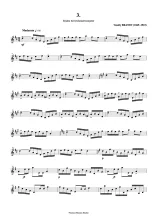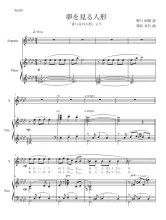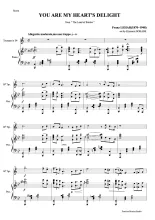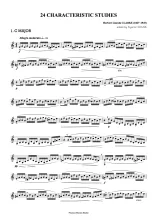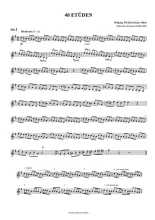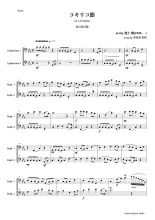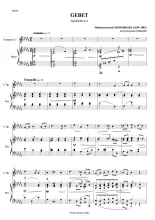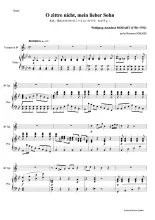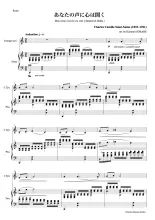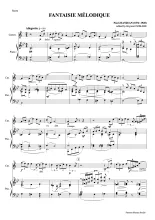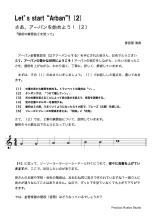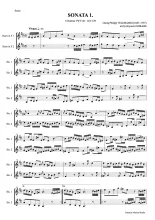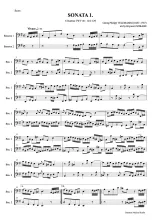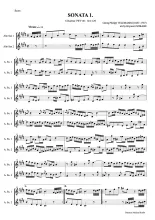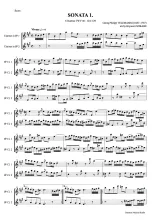New Releases
Our Staff Picks
News
O zittre nicht, mein lieber Sohn
MOZART, Wolfgang Amadeus (arr. SOKABE, Kiyonori)ウォルフガング・アマデウス・モーツァルト(arr. 曽我部清典)
モーツアルトのオペラ「魔笛」より第1幕の夜の女王のアリア『ああ、恐れおののかなくてもいいのです、わが子よ』をピッコロトランペットとピアノのために編曲しました。こちらも最高音はFとなっています。
Mon coeur s'ouvre a ta voix
SAINT-SAËNS, Charles Camille (arr. SOKABE, Kiyonori)カミーユ・シャルル・サンサーンス(arr. 曽我部清典)
サンサーンスのオペラ「サムソンとデリラ」より『あなたの声に心は開く』をトランペットとピアノのためにアレンジしました。前半の同音連打のピアノと、後半の半音階を伴うメロディが印象的な歌曲です。音量や表情の変化に注意して繊細に歌い上げましょう。
Mon coeur s'ouvre a ta voix
SAINT-SAËNS, Charles Camille (arr. SOKABE, Kiyonori)カミーユ・シャルル・サンサーンス(arr. 曽我部清典)
サンサーンスのオペラ「サムソンとデリラ」より『あなたの声に心は開く』をトランペットとピアノのためにアレンジしました。前半の同音連打のピアノと、後半の半音階を伴うメロディが印象的な歌曲です。音量や表情の変化に注意して繊細に歌い上げましょう。
Wenn wir in höchsten Nöten sein
BACH, Johann Sebastian (arr. SOKABE, Kiyonori)ヨハン・ゼバスティアン・バッハ(arr. 曽我部清典)
バッハのオルガン小曲集よりBWV641「苦しみ悩みの極みにある時」をトランペットとピアノのために編曲しました。現調はG-Durですが、高音の苦手な人のためにF-Durのバージョンもつけました。まずは、少しでも楽にF-Durで。慣れてきたらG-Durで演奏しましょう。
Wenn wir in höchsten Nöten sein
BACH, Johann Sebastian (arr. SOKABE, Kiyonori)ヨハン・ゼバスティアン・バッハ(arr. 曽我部清典)
バッハのオルガン小曲集よりBWV641「苦しみ悩みの極みにある時」をトランペットとピアノのために編曲しました。現調はG-Durですが、高音の苦手な人のためにF-Durのバージョンもつけました。まずは、少しでも楽にF-Durで。慣れてきたらG-Durで演奏しましょう。
FANTAISIE MÉLODIQUE
JEANJEAN, Paul (arr. SOKABE, Kiyonori)ポール・ジャンジャン(arr. 曽我部清典)
フランスの作曲家ポール・ジャンジャンのメロディック・ファンタジーです。元はオーケストラ伴奏ですが、これはピアノリダクション版です。ジャンジャンの他の作品と同じく、パリ音楽院の学生の技術向上のために作られました。フランス近代の作品を吹きたいけど高音が苦手という方にも、最高音は実音F(カデンツでGesが出てきます)なので、貴重なレパートリーになると思います。
FANTAISIE MÉLODIQUE
JEANJEAN, Paul (arr. SOKABE, Kiyonori)ポール・ジャンジャン(arr. 曽我部清典)
フランスの作曲家ポール・ジャンジャンのメロディック・ファンタジーです。元はオーケストラ伴奏ですが、これはピアノリダクション版です。ジャンジャンの他の作品と同じく、パリ音楽院の学生の技術向上のために作られました。フランス近代の作品を吹きたいけど高音が苦手という方にも、最高音は実音F(カデンツでGesが出てきます)なので、貴重なレパートリーになると思います。
Let's start "Arban" 2
SOKABE, Kiyonori曽我部清典
Explanation : no.2 of Arban's Method.
『アーバンを始める前に』に引き続き、アーバン金管教則本について、わかりやすく詳しく解説していきます。その第2回めは、全音版アーバン金管教則本の17ページ、最初の練習曲の第2番のみ!です。
Duo Sonate nr.1 for 2 horns
TELEMANN, Georg Philipp (arr. SOKABE, Kiyonori)ゲオルグ・フィリップ・テレマン(arr. 曽我部清典)
テレマンの2本のフラウトトラベルソのためのデュオソナタを2本のホルンのために書き直しました。keyが同じなので同時にリリースされたフルート・クラリネット・アルトサキソフォン・バスーンのバージョンと併用することでほとんどの木管楽器で演奏することができます。木管アンサンブルの練習曲としてだけでなく、コンサートにも使える佳作と思います。
Duo Sonate nr.1 for 2 bassoons
TELEMANN, Georg Philipp (arr. SOKABE, Kiyonori)ゲオルグ・フィリップ・テレマン(arr. 曽我部清典)
テレマンの2本のフラウトトラベルソのためのデュオソナタを2本のバスーンのために書き直しました。keyが同じなので同時にリリースされたフルート・クラリネット・アルトサキソフォン・ホルンのバージョンと併用することでほとんどの木管楽器(ホルンを含む)で演奏することができます。木管アンサンブルの練習曲としてだけでなく、コンサートにも使える佳作と思います。
Duo Sonate nr.1 for 2 alto saxophones
TELEMANN, Georg Philipp (arr. SOKABE, Kiyonori)ゲオルグ・フィリップ・テレマン(arr. 曽我部清典)
テレマンの2本のフラウトトラベルソのためのデュオソナタを2本のアルトサキソフォンのために書き直しました。keyが同じなので同時にリリースされたフルート・クラリネット・バスーン・ホルンのバージョンと併用することでほとんどの木管楽器(ホルンを含む)で演奏することができます。木管アンサンブルの練習曲としてだけでなく、コンサートにも使える佳作と思います。
Duo Sonate nr.1 for 2 clarinets
TELEMANN, Georg Philipp (arr. SOKABE, Kiyonori)ゲオルグ・フィリップ・テレマン(arr. 曽我部清典)
テレマンの2本のフラウトトラベルソのためのデュオソナタを2本のクラリネットのために書き直しました。keyが同じなので同時にリリースされたフルート・アルトサキソフォン・バスーン・ホルンのバージョンと併用することでほとんどの木管楽器(ホルンを含む)で演奏することができます。木管アンサンブルの練習曲としてだけでなく、コンサートにも使える佳作と思います。
